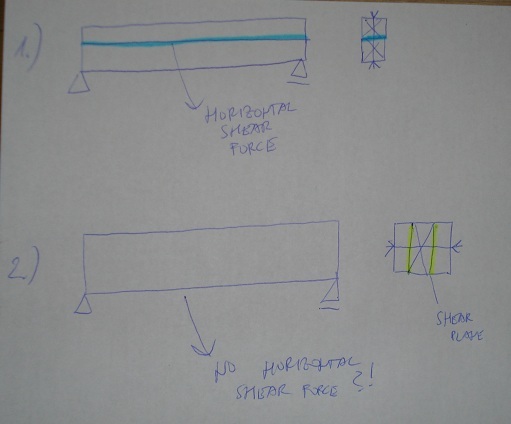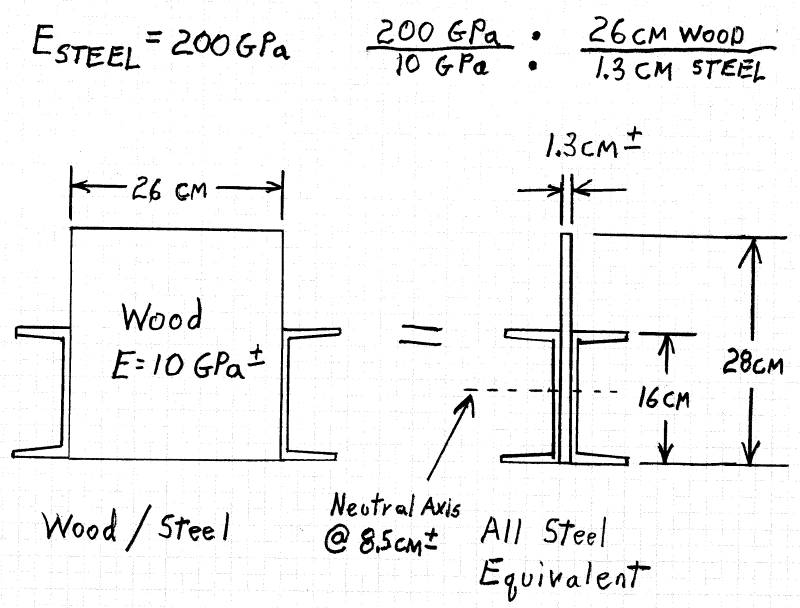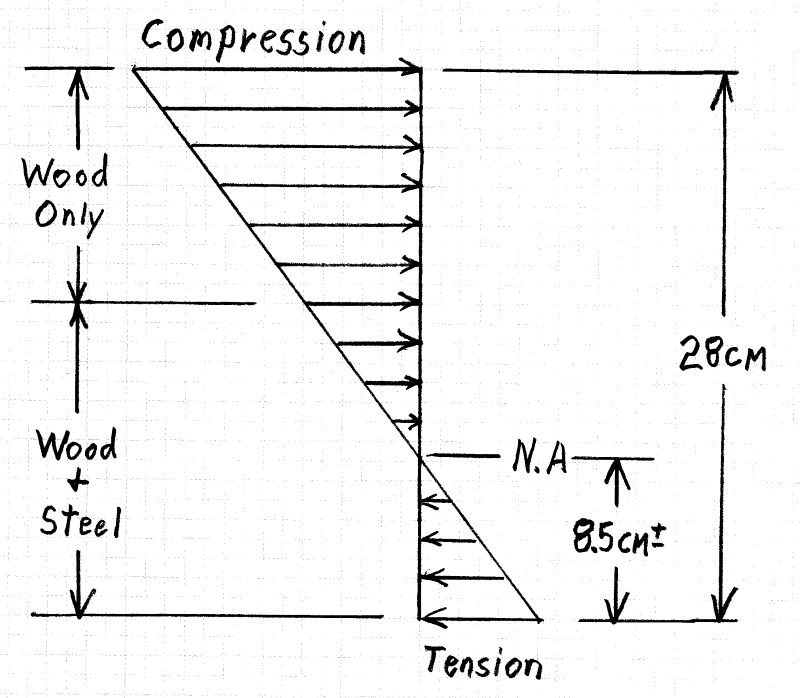n3jc
Civil/Environmental
- Nov 7, 2016
- 189
I have a wood beam reinforced with steel, connected by steel bolts.
The load is applied on wood beam only.
The load is transfered through bolts (2 shear planes) to steel.
Friction between wood/steel is not considered.
I also assumed, that the whole load is transfered to the steel sections (I did not calculate the load transfering to steel - by ratio of the stiffness).
Im wondering if this calculation is OK?
I was expecting bolts closer to each other. I do not think bolts that far apart are sufficient connection for this to be a composite (one element)?
What am I missing?
The load is applied on wood beam only.
The load is transfered through bolts (2 shear planes) to steel.
Friction between wood/steel is not considered.
I also assumed, that the whole load is transfered to the steel sections (I did not calculate the load transfering to steel - by ratio of the stiffness).
Im wondering if this calculation is OK?
I was expecting bolts closer to each other. I do not think bolts that far apart are sufficient connection for this to be a composite (one element)?
What am I missing?






![[idea] [idea] [idea]](/data/assets/smilies/idea.gif)
![[r2d2] [r2d2] [r2d2]](/data/assets/smilies/r2d2.gif)